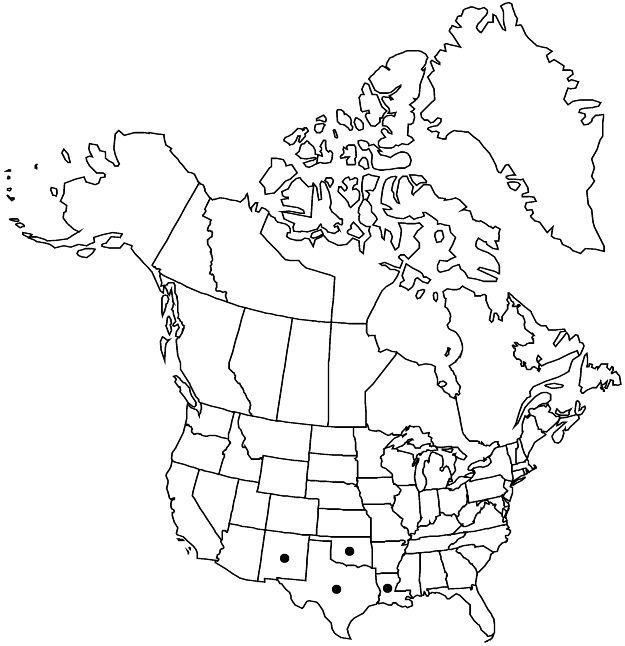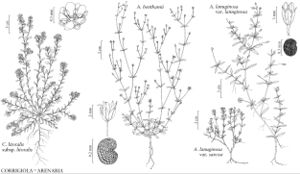Arenaria benthamii
Fl. N. Amer. 1: 675. 1840.
Plants annual. Taproots filiform. Stems 1–40+, erect to ascending, branching, green, 10–30 (–50) cm; internodes ± terete, mostly 1–10 times as long as leaves, dull, retrosely puberulent in 2 lines. Leaves usually connate proximally, with scarious sheath 0.2–0.4 mm, petiolate (proximal leaves) or sessile; petiole 2–4 mm; blade 1-veined, vein ± weak abaxially, ovate (petiolate blades) or elliptic-lanceolate to oblanceolate, 5–15 (–20) × 2–4 mm, herbaceous, margins undulate, scarious, shiny, sparsely ciliate especially proximally, apex acute to apiculate or cuspidate, often pustulate, glabrous; axillary leaf clusters absent. Inflorescences terminal, open, leafy, 3–50+-flowered cymes. Pedicels erect to reflexed in fruit, 10–40 mm, glabrous. Flowers: sepals green, 1-veined, vein obscure or prominent proximally, not keeled, elliptic to broadly ovate (herbaceous portion light green, ovate), 2–3.5 mm, to 4.5 mm in fruit, apex acute to acuminate, often pustulate, glabrous; petals elliptic, 1.5–3 mm, 1/2–3/4 times as long as sepals, apex obtuse. Capsules loosely to tightly enclosed by calyx, ovoid, 3–4 mm, 11/5–2 times as long as sepals. Seeds 20–30, ashy brown, broadly reniform, compressed, 0.5–0.6 mm, dull, minutely or prominently rounded-tuberculate.
Phenology: Flowering late spring.
Habitat: Open woodlands, limestone slopes and outcrops
Elevation: 0-400 m
Distribution

La., N.Mex., Okla., Tex., Mexico (Coahuila), Mexico (Nuevo León)
Discussion
Selected References
None.
Lower Taxa
"/5-2timesaslongassepals" is not declared as a valid unit of measurement for this property.
